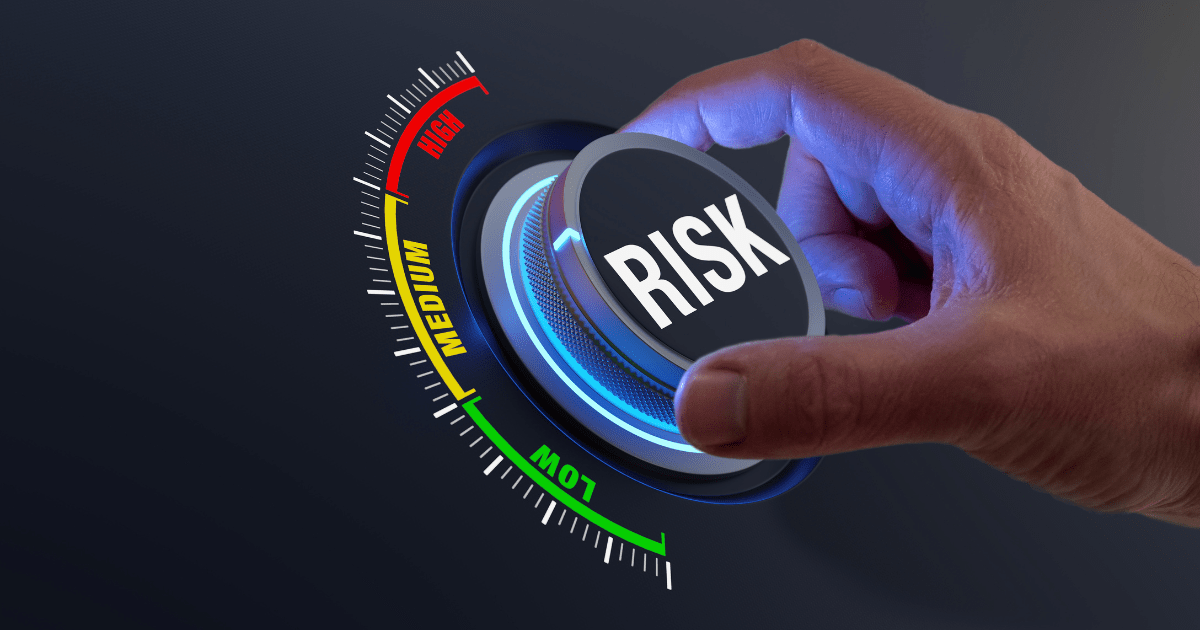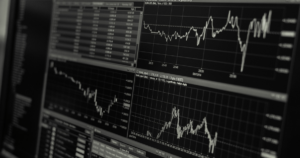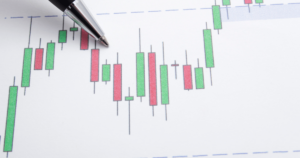As a trader, you bear a considerable amount of risk every time you enter a trade. Risk management in trading plays a vital role in making smarter investment decisions. Without it, you put yourself at risk of losing your hard-earned money.
Effective risk management in trading involves many strategies, techniques, and tools that help traders identify, assess, and mitigate potential risks. By understanding the importance of risk management in trading, you can adopt the necessary steps to avoid costly mistakes and maximize your profits.
Key Takeaways
- Risk management in trading is essential to make smarter investment decisions.
- Effective risk management involves strategies, techniques, and tools to identify, assess, and mitigate risks.
- Without risk management, traders could be at risk of losing their invested capital.
Understanding Risk Assessment in Trading
Trading can be a lucrative endeavor, but it also involves risks. Successful traders understand the importance of assessing and managing risks to make informed investment decisions. Risk assessment in trading involves analyzing different factors to determine the potential risks associated with a trade.
The first step in risk assessment is analyzing market volatility. Different markets have varying degrees of volatility, which affects the potential risks in a trade. Traders must evaluate the volatility of the market they wish to trade and adjust their risk management strategies accordingly.
Position sizing is another critical factor to consider when assessing risks. Traders must determine the appropriate position size based on their account size, risk tolerance, and the potential risks involved in the trade. Proper position sizing ensures that traders can manage their potential losses effectively.
In addition to market volatility and position sizing, traders need to analyze their potential losses. Risk assessment involves evaluating the potential losses in a trade and analyzing the risk/reward ratio. A favorable risk/reward ratio can make a trade worth pursuing, while an unfavorable risk/reward ratio can indicate a poor investment decision.
Effective risk management techniques can help limit potential losses and manage risks effectively. Popular risk management techniques include setting stop-loss orders and utilizing trailing stops to automatically close out trades if they go against the trader. Additionally, traders can hedge their positions to reduce risk exposure.
Overall, risk assessment is a critical component of successful trading. Traders who understand the potential risks involved in a trade and have a robust risk management plan are more likely to make informed investment decisions and achieve consistent profits.
Implementing Effective Risk Control in Trading
When it comes to managing risk in trading, effective risk control is essential for minimizing potential losses. There are various methods and tools available for traders to implement effective risk control strategies.
One common method is setting stop-loss orders. Traders can set a stop-loss order to automatically close a trade at a specific price level in case of an adverse price move. Another effective method is using trailing stops, which allow traders to adjust the stop-loss level as the market moves in their favor.
Additionally, traders can utilize hedging strategies to limit potential losses. Hedging involves opening a position in the opposite direction of trade to offset potential losses.
| Risk Control Strategies | Description |
|---|---|
| Stop-loss orders | Automatically closes a trade at a specific price level in case of an adverse price move |
| Trailing stops | Adjusts the stop-loss level as the market moves in the trader’s favor |
| Hedging | Opens a position in the opposite direction of a trade to offset potential losses |
It is also crucial for traders to monitor their trades and adjust their risk control measures accordingly. This ensures that traders can adapt to changing market conditions and adjust their risk control measures to minimize potential losses.
“Effective risk control is crucial in managing potential losses and maximizing profits in trading.”
Conclusion:
Implementing effective risk control measures is essential in managing potential losses and maximizing profits in trading. Traders should consider utilizing various risk control strategies such as stop-loss orders, trailing stops, and hedging. It is also important to monitor trades and adjust risk control measures accordingly to adapt to changing market conditions.
Best Practices in Trading Risk Management
Effective risk management is crucial for success in trading. Here are some best practices you should consider:
Diversify Your Investments
Diversification is the cornerstone of risk management. Investing in a variety of assets can help reduce your exposure to market volatility and mitigate the risk of a single investment performing poorly. Consider spreading your investments across different sectors, asset classes, and geographical locations.
Maintain Discipline
Maintain a disciplined approach to trading by following a predefined risk management plan. Avoid making impulsive decisions or letting emotions cloud your judgment. Stick to your plan, even during times of market turbulence.
Utilize Risk Management Tools
There are various risk management tools available to traders, including stop-loss orders, trailing stops, and hedging strategies. These tools can help you limit potential losses and manage risk effectively.
Stay Educated
Stay up-to-date with market trends and events that could affect your investments. Continuously monitor your portfolio and adjust your risk management strategies accordingly. Consider taking courses or attending seminars to improve your knowledge of trading and risk management.
Work with a Professional
Consider working with a financial advisor or professional trader to help you develop and execute your risk management plan. They can provide valuable insights, analysis, and guidance to help you make informed decisions.
Understanding Risk Tolerance in Trading
When it comes to trading, understanding your risk tolerance is critical in making the right risk management decisions. Risk tolerance refers to your ability and willingness to withstand potential losses in pursuit of higher profits. Here are some key factors that contribute to determining an individual’s risk tolerance:
- Financial goals: Consider your long-term financial objectives, such as retirement savings or short-term investment goals. Your risk tolerance may vary depending on these goals.
- Investment experience: Your past experiences with investing and trading can shape your risk tolerance. If you are new to trading, you may have a lower risk tolerance than someone with more experience.
- Psychological factors: Emotional biases, such as fear or greed, can impact your risk tolerance. It’s important to assess your emotional responses to risk and develop strategies to manage them.
By understanding your risk tolerance, you can make better decisions about risk management in trading. You can assess your risk tolerance through various methods, such as risk assessment questionnaires, simulations, or consultation with a financial advisor. Keep in mind that risk tolerance can change over time, so it’s important to regularly reevaluate it to ensure your risk management strategies align with your current goals and preferences.
Developing a Personalized Risk Management Plan
Building a personalized risk management plan is crucial for successful trading and minimizing potential losses. It involves defining risk limits, establishing position sizing rules, and implementing risk monitoring procedures. Here are the key components of a comprehensive risk management plan:
| Component | Description |
|---|---|
| Define Risk Limits | Determine the maximum amount of money that can be risked on each trade and overall portfolio. This helps traders avoid being exposed to large losses. |
| Establish Position Sizing Rules | Determine the appropriate position size based on the amount of capital available, risk tolerance, and potential risk/reward ratio. This helps traders avoid overexposure to a single stock or asset class. |
| Implement Risk Monitoring Procedures | Monitor trades regularly to ensure they are in line with the predefined risk management plan. Make necessary adjustments to control potential losses. |
In addition to these components, there are several risk management tools available that can assist traders in implementing their plan effectively. These include stop-loss orders, trailing stops, and hedging strategies. It’s important to note that a risk management plan should be personalized to an individual’s trading goals and risk tolerance.
The Importance of Continuous Risk Management
Effective risk management in trading requires continuous monitoring and adjustment. Trading conditions can change rapidly, and risks that were once manageable may suddenly become larger than expected. That’s why it’s important to conduct regular risk assessments to ensure that your trading strategies are aligned with your risk management goals.
As part of ongoing risk management, traders should regularly review and adjust their risk control measures. This may include modifying stop-loss orders, reevaluating position sizing, and adjusting hedging strategies. Additionally, traders should track and evaluate the performance of their risk management strategies to identify what’s working and what needs improvement.
Staying proactive and adaptive in managing risks can help traders optimize their investment returns while minimizing potential losses. By taking a continuous approach to risk management, traders can ensure that they are always making informed, strategic decisions based on the latest market conditions.
Conclusion
Mastering risk management in trading is essential for making smarter investment decisions. By implementing effective risk assessment, risk control, and risk management strategies, traders can minimize potential losses while maximizing profits.
Remember to diversify your investments, maintain discipline, and stick to a predefined risk management plan. Utilize risk management tools to assist you in implementing your plan effectively. It’s important to continuously assess potential risks, adjust risk control measures, and evaluate risk management strategies to stay proactive and adaptive in managing potential risks throughout your trading journey.
By prioritizing risk management in trading, you can make informed investment decisions, reduce the likelihood of losses, and increase your chances of success in achieving your financial goals. Start developing your personalized risk management plan today to take your trading to the next level.
FAQ
Q: What is risk management in trading?
A: Risk management in trading refers to the process of identifying, assessing, and mitigating potential risks associated with trading activities. It involves implementing strategies and measures to protect investments and minimize potential losses.
Q: Why is risk management important in trading?
A: Risk management is important in trading because it helps traders make smarter investment decisions. By effectively managing risks, traders can protect their capital, minimize losses, and increase the likelihood of achieving their financial goals.
Q: What are some potential risks involved in trading?
A: Some potential risks involved in trading include market volatility, unexpected price movements, liquidity issues, and geopolitical events. These risks can lead to financial losses if not managed effectively.
Q: What are some effective risk management strategies in trading?
A: Some effective risk management strategies in trading include diversifying investments, setting stop-loss orders, using trailing stops, implementing position sizing rules, and monitoring trades regularly.
Q: How can traders assess and manage their risk tolerance?
A: Traders can assess and manage their risk tolerance by considering factors such as their financial goals, investment experience, and psychological factors. It is important for traders to understand their risk tolerance and make risk management decisions accordingly.
Q: How can traders develop a personalized risk management plan?
A: Traders can develop a personalized risk management plan by defining risk limits, establishing position sizing rules, and implementing risk monitoring procedures. Utilizing risk management tools can also assist in implementing the plan effectively.
Q: Why is continuous risk management important in trading?
A: Continuous risk management is important in trading because market conditions and risks can change over time. Regular risk assessments, adjustments to risk control measures, and ongoing evaluation of risk management strategies are crucial for maintaining a successful trading journey.








